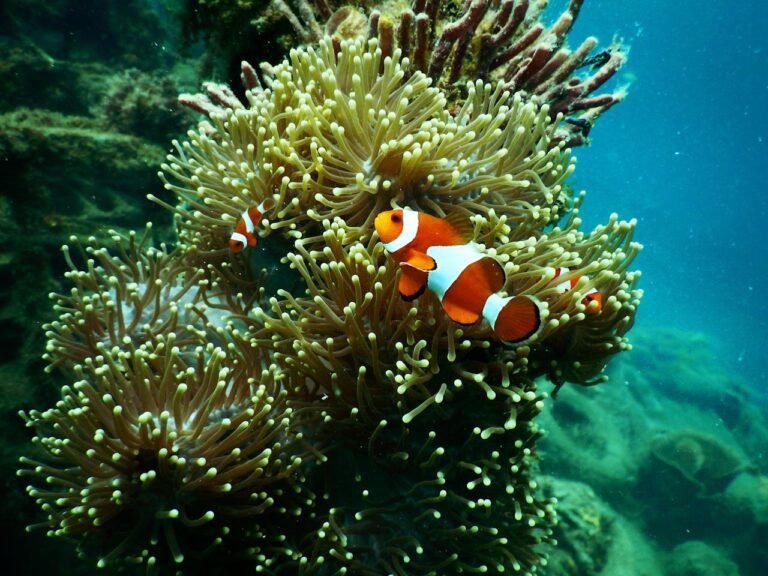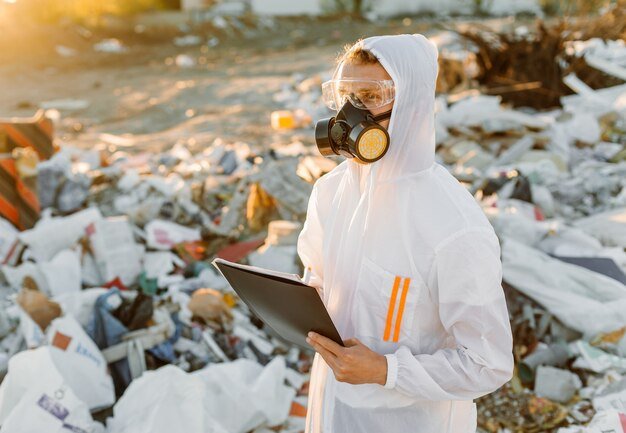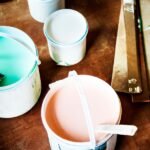Plastic-Eating Fungi: Nature’s Solution to Plastic Pollution
In a world increasingly burdened by plastic waste, a growing body of research is exploring how fungi and other microorganisms could help break down synthetic materials. In one notable study from Germany, researchers at the Leibniz Institute of Freshwater Ecology and Inland Fisheries have identified fungi capable of thriving solely on synthetic polymers like polyurethane, effectively converting them into biomass. Dr. Hans-Peter Grossart, leading the study, remarked, “Our fungi could exclusively grow on some of the synthetic polymers and even form biomass.”
This discovery shows the remarkable adaptability of fungi, organisms that have evolved to exploit even the most unlikely of niches. Dr. Feng Cai of Sun Yat-sen University reflects on this potential, stating, “The sheer power of microbial diversity… fills me with an incredible sense of satisfaction, knowing that there are numerous discoveries still to be made”.
These insights into fungal capabilities open new avenues for addressing the plastic pollution crisis. By harnessing the natural processes of these microorganisms, we may develop sustainable methods to mitigate the environmental impact of plastic waste. The exploration of plastic-eating fungi not only reveals nature’s resilience but also offers a promising path toward ecological restoration.

What Is Mycoremediation and How Do Plastic-Eating Fungi Work to Tackle Plastic Pollution?
Mycoremediation refers to the use of fungi to break down environmental pollutants, including plastics, through natural biochemical processes. Recent studies have highlighted the remarkable potential of certain fungal species in degrading stubborn plastic materials like polypropylene, which is notoriously resistant to recycling.
Fungi are uniquely suited for environmental cleanup due to their ability to secrete powerful extracellular enzymes such as laccases, peroxidases, and hydrolases. These enzymes break the long-chain polymer bonds in plastics into simpler, biodegradable compounds. Once broken down, fungi can assimilate these molecules as carbon sources to support their own growth, effectively transforming waste into biomass.
Two fungal genera stand out for their plastic-degrading capabilities:
- Penicillium – Already well-established in biotechnology, Penicillium species have shown significant efficiency in breaking down plastics.
- Aspergillus – Known for its robust enzymatic systems, this genus has demonstrated strong bioremediation potential across various plastic types.
Research conducted by the University of Sydney found that two common fungal strains could biodegrade polypropylene, a material that typically defies conventional recycling methods. Complementary findings published in Science of the Total Environment also confirmed that the plastic-degrading efficiency of fungi largely depends on the plastic’s chemical composition and structure.
This growing body of evidence positions mycoremediation—especially through plastic-eating fungi—as a groundbreaking innovation in the fight against plastic pollution, with the potential to transform how we manage synthetic waste on a global scale.
Pioneering Fungi in Plastic Degradation
1. Pestalotiopsis microspora
Discovered in the lush Ecuadorian Amazon, Pestalotiopsis microspora is an endophytic fungus that has garnered attention for its unique ability to degrade polyurethane (PUR), a common component in many plastic products. What sets this fungus apart is its capacity to break down PUR in both oxygen-rich (aerobic) and oxygen-poor (anaerobic) environments, making it particularly suitable for landfill conditions where oxygen is scarce.
The fungus achieves this through the production of a serine hydrolase enzyme, which effectively breaks down the complex polymer chains of PUR. This enzymatic activity allows P. microspora to utilise PUR as its sole carbon source, highlighting its potential in bioremediation efforts aimed at reducing plastic waste in challenging environments.

2. Pleurotus ostreatus (Oyster Mushroom)
Commonly found in Nigerian forests, the oyster mushroom (Pleurotus ostreatus) is not only a culinary delight but also a potent agent in plastic degradation. Researchers have demonstrated its ability to break down components of disposable diapers, which include polyethene and polypropylene, as well as cellulose.
In controlled studies, P. ostreatus was cultivated on used diapers, leading to a significant reduction in mass and volume, up to 90% over a 68-day period. The fungus effectively degraded the cellulose content by 50% and lignin content by 47%, showcasing its potential in managing urban solid waste. Moreover, the harvested mushrooms were found to be safe for consumption, offering a dual benefit of waste reduction and food production.

3. Aspergillus tubingensis
Isolated from a landfill in Islamabad, Pakistan, Aspergillus tubingensis has shown remarkable efficiency in degrading polyurethane. In laboratory settings, this fungus was observed to colonise and break down polyurethane films within weeks, a process confirmed through scanning electron microscopy and spectroscopic analyses.
The fungus secretes enzymes that cleave the chemical bonds in polyurethane, leading to its decomposition into smaller, less harmful compounds. This rapid degradation rate positions A. tubingensis as a promising candidate for industrial-scale applications aimed at mitigating plastic pollution.

4. Engyodontium album
Australian scientists have identified Engyodontium album as a fungus capable of breaking down polypropylene, a plastic known for its resistance to degradation. In controlled experiments, E. album achieved complete decomposition of polypropylene within 140 days, a significant feat considering the material’s durability.
The fungus operates by colonising the plastic surface and secreting enzymes that dismantle the polymer chains. This discovery opens avenues for addressing the accumulation of polypropylene in the environment, particularly in settings where traditional recycling methods are ineffective.
5. Parengyodontium album
Found in marine environments, particularly within the Great Pacific Garbage Patch, Parengyodontium album has demonstrated the ability to degrade polyethene, especially when the plastic is exposed to ultraviolet (UV) light. Researchers isolated this fungus from floating plastic debris and observed its capacity to mineralise UV-treated polyethene into carbon dioxide over a nine-day incubation period.
The process involves the fungus utilising the degraded plastic as a carbon source, albeit with minimal incorporation into its biomass. This finding shows the potential of P. album in contributing to the breakdown of oceanic plastic waste, particularly in sunlit surface waters where UV exposure facilitates initial plastic degradation.
Real-World Applications and Innovations
1. Fungi Mutarium – Edible Waste Reduction
Austrian designer Katharina Unger, in collaboration with Utrecht University, developed the Fungi Mutarium—a tabletop system that grows edible mushrooms capable of digesting plastic. Using two fungi species, Schizophyllum commune and Pleurotus ostreatus, the setup sterilises plastic with UV light before placing it in agar pods known as “FUs.” The fungi consume the plastic and produce a neutral-tasting, edible biomass. This innovation offers a sustainable approach that merges waste reduction with food production, illustrating how fungi can contribute to both ecological cleanup and alternative nutrition.
2. HIRO Technologies: Fungi-Powered Biodegradable Diapers
HIRO Technologies has developed a solution to address the environmental impact of disposable diapers through their product, HIRO Baby Diapers, which incorporates plastic-eating fungi that degrade the carbon chains in plastics, transforming them into soil-enriching mycelium. This innovation not only reduces landfill waste but also contributes to a circular economy by converting waste into a resource. The company aims to make these diapers backyard compostable by 2026, offering a sustainable alternative to traditional disposable diapers.
3. Ocean Blue Project: Marine Fungi for Ocean Plastic Cleanup
The Ocean Blue Project (OBP), in collaboration with NASA and environmental group SumOfUs, is exploring the use of marine fungi to combat ocean plastic pollution. These fungi have demonstrated the ability to break down plastics like polyethene, commonly found in marine debris. By harnessing the natural plastic-degrading capabilities of these fungi, OBP aims to develop eco-friendly methods for cleaning up oceanic plastic waste without harming marine ecosystems.
Challenges and Considerations
1. Scaling Up from Lab to Real World
Most research on plastic-eating fungi has been conducted in controlled laboratory settings. Applying these findings on a larger scale, such as in landfills or polluted natural environments, is complex.
2. Speed of Degradation
Fungi degrade plastic at a much slower rate compared to the speed at which plastic is produced and discarded. For example, some fungi took 90 days to degrade just 27% of polypropylene in a study. This slow pace makes it challenging to rely solely on fungi for large-scale plastic waste management.
3. Environmental and Safety Concerns
Introducing fungi into new environments raises ecological questions. There’s a risk that non-native or genetically modified fungi could disrupt local ecosystems. Additionally, the byproducts of fungal plastic degradation, such as microplastics or toxic residues, need thorough assessment to ensure they don’t pose new environmental or health risks.
4. Economic and Infrastructure Challenges
Scaling up fungal degradation processes requires significant investment in infrastructure, such as bioreactors, and ongoing research to optimise conditions for different types of plastics. The economic viability of such operations is still under evaluation, especially when compared to existing recycling methods.
Potential Solutions in Development
Researchers are exploring various strategies to overcome these challenges:
- Bioengineered Fungi: Modifying fungi genetically to enhance their plastic-degrading capabilities
- Hybrid Systems: Combining fungal degradation with mechanical pre-treatment to accelerate the process.
- Scalable Bioreactors: Developing modular systems that can be implemented in waste management facilities.
- Community-Based Initiatives: Empowering local communities with fungal kits to manage plastic waste at the grassroots level
Building a Backyard Mycoremediation Kit
- Step 1 — Choose Your Fungus: Begin with oyster mushrooms, known for their resilience and effectiveness in decomposing materials like polyethene and polyurethane. Their mycelium produces enzymes, such as laccase, which can break down complex polymers into simpler, less harmful compounds.
- Step 2 — Prepare the Substrate: Create a growth medium using a mix of cardboard and sterilised agricultural waste like straw or sawdust. This combination provides the necessary nutrients for the mycelium to thrive.
- Step 3 — Inoculate and Incubate: Introduce the mushroom spawn into your prepared substrate. Maintain a humid environment, ideally between 20-24°C, to encourage mycelial growth over the next two to three weeks.
- Step 4 — Introduce Plastics: Once the mycelium has colonised the substrate, add small, clean pieces of plastic, such as polyethene or polyurethane. Ensure the plastics are free from contaminants to avoid introducing harmful substances into the system.
- Step 5 — Monitor Decomposition: Over the next 4-6 weeks, observe the mycelium’s interaction with the plastic. Look for signs of degradation, such as changes in the plastic’s texture or the appearance of fungal growth on its surface. Studies have shown that Pleurotus ostreatus can cause visible scarring and structural changes in plastics during this period.
Safety Precautions
Always wear gloves and a mask when handling fungal cultures and decomposing materials. Ensure your workspace is well-ventilated, and avoid consuming any mushrooms grown in this setup, as they may have absorbed harmful substances from the plastics.
Learn More: Why Recycling Isn’t the Answer to the Plastic Pollution Crisis
Conclusion: Actionable Steps Forward
Plastic-eating fungi offer an exciting and eco-intelligent solution to our plastic problem. But action is key. Whether you’re a student, policymaker, or concerned citizen, here are steps you can take:
- Learn and Share: Start by learning about mycoremediation. Share this knowledge with your community, schools, or local environmental groups. Understanding local fungal biodiversity can help identify species that might be effective in breaking down plastics.
- Support the Science: Research is ongoing to find the best fungal strains for different plastics. Consider supporting organisations and universities conducting this research through donations or volunteering.
- Reduce and Reuse: While fungi can help degrade plastics, reducing our plastic use is still crucial. Opt for reusable items, and be mindful of your plastic consumption
- Advocate for Change: Encourage local and national governments to fund green innovations, including fungal-based waste management. Policies that support research and implementation can make a significant difference.
- Start Small Projects: Pilot programs in communities can test the feasibility of using fungi for waste management. These small-scale projects can provide valuable data and pave the way for larger initiatives.







